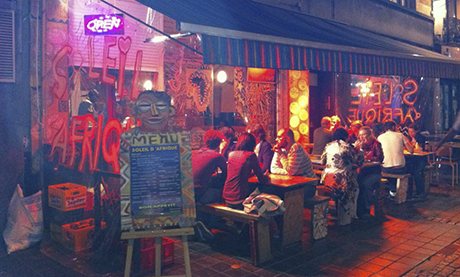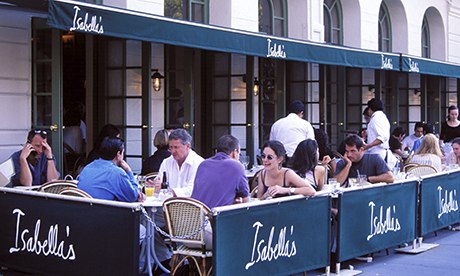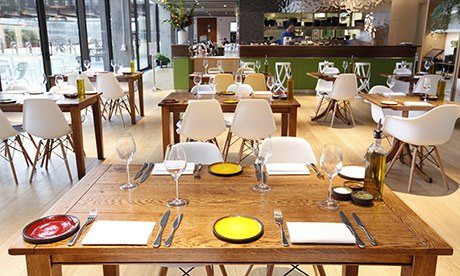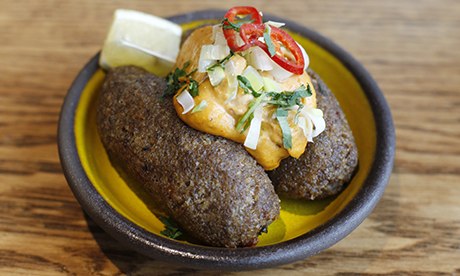WINNING TIP: The Verulam Arms, St Albans
St Albans has a lot of pubs to choose from but this place is different: no Stella. Where else can you get a hogweed and bloete martini? The food and drink are brought in from the Hertfordshire countryside by a group of local hunter-gatherers called The Foragers is surprisingly bountiful. Add a friendly atmosphere, cosy interior, approachable bar staff and a great choice of craft beers, and this is the place for a pint and good food, all in the shadow of the cathedral.
the-foragers.com/the-verulam-arms
cand82
The Eagle, Cambridge
The highlight of my Saturday visit to the market is a pint in the Eagle, which dates from the 14th century and, much later, was where Watson and Crick announced they had discovered “the secret of life”, or DNA. The Eagle is also famous for its ceiling: in the second world war, RAF pilots signed the ceiling with anything to hand: lipsticks, cigarette lighters, candles, even candle smoke. It also does fantastic cask ales and home-cooked food.
8 Bene’t Street, 01223 505020
Kimmy90210
The Bell, Bath
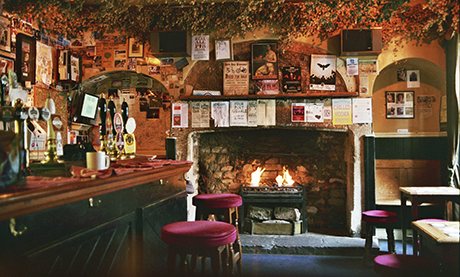
The Bell really is the local’s local. After facing closure last year, it sold shares to its customers and is now a co-operative. As well as regular guest ales and local beers, it’s the music at the Bell that draws many. The food is OK, but it’s not what you would go there for. It’s just a great boozer!
103 Walcot Street, 01225 460426, thebellinnbath.co.uk
joolsy
Y Delyn, Mold, Flintshire
From its unprepossessing exterior, you would never guess at the wonder that awaits you inside Y Delyn. As well as walls adorned with old theatre posters, tables from spinning machines and fairy lights around the bar, there is a vast choice of beers, including Leffe and Hoegaarden on tap, reasonably priced delicious tapas, live music nights and an atmosphere that means you can easily lose several hours imagining you have stepped into continental Europe.
3 King Street, 01352 759642
mattnash
Prince of Wales, Kenfig, Bridgend
The 16th-century Prince of Wales must be the best pub in Wales. It’s walking distance from my house, and full of family, friends, locals, ghosts, history on the walls, great food, the finest cask beers and wonderful hosts – there is no better way to spend an evening. After a walk to Kenfig Pool and through the local nature reserve, it’s a wonderful place to relax and refresh those tired bones.
01656 740356, princekenfig.co.uk
wxerri
The King and Queen, Hamble, Hampshire
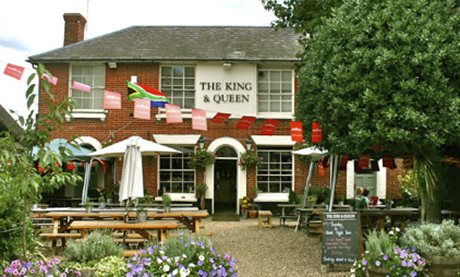
Got a bag of dirty laundry? Take it to the King and Queen, where there’s a laundrette, and relax by the inglenook with a book from the shelf while waiting for it to finish. This is a haven for sailors from near and far, and filled with locals whose faces you might recognise from Howards’ Way. This pub has a jovial feel, with good food, great beer, excellent rums and friendly staff.
023-8045 4247, thekingandqueenpub.co.uk
FarawayVisions
The Three Compasses, Hornsey, London
If planning an ascent up the south face of Muswell Hill, pause in the foothills of Hornsey High Street at this regular winner of best community pub awards. It has one of the finest ale selections in north London, with new ones appearing weekly, and the menu is ambitious without being terrifying. But it is the ambience that keeps ‘em coming back: a modern interpretation of the traditional London boozer, popular without being poncey.
62 High Street, N8, 020-8340 2729, threecompasses.com
winskill
Inn on the Green, Bristol
From the raucous beer festival over May Day to the cosy Sunday night quiz, the Inn on the Green is our second living room. A short stumble from Horfield common, it’s the last best stop on the A38 out of Bristol, with its ever-changing ales, wood fires, good food and amusingly graffitied Jenga. Yes it’s a bit tired (gents toilets), yes it’s a funny shape (old bowling alley bit), but it’s my local and I like it!
2 Filton Rd, Horfield, 0117 952 1391
crodd
The Jolly Brewer Lincoln,
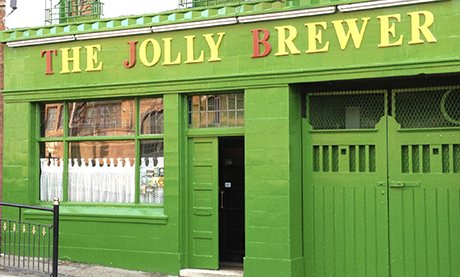
The Brewer has a jarringly bright interior and a questionable selection of artwork. It makes up for that with a friendly and eclectic clientele and a great selection of real ales and ciders. It’s also popular with the local steampunk scene, so there are often amazing outfits to gawp at, and the beer garden is full well into autumn.
26 Broadgate, 01522 528583
Rosie Kelly
The Woodbine, Finsbury Park, London
Our favorite local in Finsbury Park is near where Blackstock Road runs into Highbury. The Woodbine is one of the cosiest pubs around, coupled with amazing music (on vinyl and usually of the Neil Young/Rolling Stones/Springsteen ilk), fantastic beers on tap (rotating casks along with Meantime and Camden breweries), great staff and awesome regulars. I would copy the decor in my house if I had the balls to do it. Good pub quiz, good specials, decent Thai food.
215 Blackstock Road N5, 020-7354 1061
ID6725784















